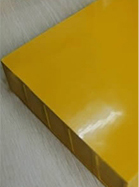loading...
- No. 9, Xingyuan South Street, Dongwaihuan Road, Zaoqiang County, Hengshui, Hebei, China
- admin@zjcomposites.com
- +86 15097380338
- Welcome to visit our website!
Innovative Solar Structures Utilizing FRP Materials for Enhanced Energy Efficiency
The Rise of FRP Solar Structures in Renewable Energy
In recent years, the global shift towards renewable energy has prompted the exploration of innovative materials and technologies that can enhance the efficiency and sustainability of solar power systems. Among these developments, Fiber Reinforced Polymer (FRP) solar structures have emerged as a game-changer in the field of solar energy. Combining lightweight design, durability, and resistance to environmental stresses, FRP has positioned itself as an ideal material for constructing solar panels and their supporting structures.
Understanding FRP
FRP is a composite material that is made by reinforcing a polymer matrix with fibers, typically glass, carbon, or aramid. This combination results in a lightweight yet strong structure that is resistant to corrosion, UV radiation, and extreme weather conditions. The unique properties of FRP make it a suitable choice for various applications, especially in environments where traditional materials such as steel or aluminum may fail.
Advantages of FRP Solar Structures
1. Lightweight Nature FRP structures are significantly lighter than their metal counterparts. This feature allows for easier transportation, installation, and reduced structural load on rooftops and mounting systems. A lighter solar structure can lead to lower installation costs and increased versatility in deployment scenarios, particularly in locations with weight restrictions.
2. Corrosion Resistance Unlike traditional materials, FRP does not corrode when exposed to moisture, salt, or chemicals. This resistance makes FRP an ideal choice for coastal areas or regions with harsh environmental conditions. The longevity of FRP structures reduces maintenance costs over time and increases the overall lifespan of the solar installations.
3. High Strength-to-Weight Ratio The strength of FRP allows it to withstand high wind loads and snow loads effectively, which is crucial for ensuring the stability and safety of solar panels in various geographical locations. This characteristic also allows for larger panel arrays, optimizing energy generation without compromising structural integrity.
frp solar structure

4. Design Flexibility FRP can be molded into complex shapes and designs, offering architects and engineers the flexibility to create aesthetically pleasing and functional solar structures. This adaptability makes it easier to integrate solar technology into buildings and landscapes, promoting the adoption of solar energy in urban settings.
5. Thermal Insulation Properties FRP materials provide better thermal insulation compared to metals. This property can enhance the efficiency of solar panels by reducing heat loss and improving thermal performance. As a result, solar energy systems can achieve optimal functioning even in varying temperatures.
Applications of FRP Solar Structures
The versatility of FRP has led to its implementation in various solar energy applications. It is increasingly being used in the construction of solar mounting systems, where lightweight and durable materials are essential. Furthermore, FRP is being explored for use in solar canopies, carports, and other innovative solutions that harness solar energy while providing additional utility.
In utility-scale solar farms, FRP structures can reduce costs associated with foundations and may increase the speed of installation. As the demand for renewable energy grows, the potential applications of FRP will continue to expand, driving innovation in the solar industry.
Conclusion
The adoption of FRP solar structures represents a significant advancement in the pursuit of efficient, sustainable, and visually appealing renewable energy solutions. As technology continues to evolve, the integration of FRP materials into solar energy applications can help meet the growing global energy demands while fostering an environmentally friendly approach to energy production. With their numerous advantages, FRP solar structures are poised to play a crucial role in the future of renewable energy landscapes, paving the way for a cleaner and brighter future.
-
The Rise of FRP Profiles: Strong, Lightweight, and Built to LastNewsJul.14,2025
-
SMC Panel Tanks: A Modern Water Storage Solution for All EnvironmentsNewsJul.14,2025
-
GRP Grating: A Modern Solution for Safe and Durable Access SystemsNewsJul.14,2025
-
Galvanized Steel Water Tanks: Durable, Reliable, and Ready for UseNewsJul.14,2025
-
FRP Mini Mesh Grating: The Safer, Smarter Flooring SolutionNewsJul.14,2025
-
Exploring FRP Vessels: Durable Solutions for Modern Fluid HandlingNewsJul.14,2025
-
GRP Structures: The Future of Lightweight, High-Performance EngineeringNewsJun.20,2025
